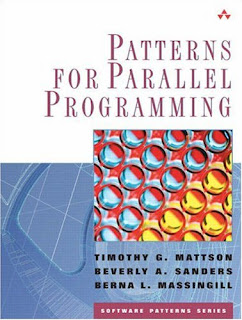
This book provides a complete reference to network mergers
and migrations using the Junos operating systemNetwork Mergers and
Migrations provides readers with a comprehensive guide for network
migration activities by detailing a variety of internetworking case
studies. Both enterprise and service provider scenarios are examined
based on the experience and expertise of two senior Juniper Networks
engineers. From MPLS Layer 3 VPN migration approaches to comprehensive
network protocol consolidation and integration, each case study covers
planning, design and implementation, as well as discussing alternatives
and leveraging additional specific services and Junos resources, to
ensure successful completion at each migration phase. These case studies
are complemented with solid state-of-the-art protocol analysis and with
practical application notes focused on specific functionalities.
Readers are shown, not told, how to accomplish one of the more critical
tasks of modern day networking, merging two or more networks or
migrating one into the other. This is a book that truly describes the
challenges that involve networks in modern environments, in both
enterprise and service provider milieus.Key Features: Provides an
invaluable reference for engineers needing to upgrade networks,
consolidate activities, or deploy new features or services. Contains
case studies and application notes of network migrations, moving well
beyond theoretical technology descriptions. Offers advanced techniques
from engineers who have planned, designed, and accomplished complicated
internetwork migrations, offering lessons learned from their success
stories and pitfall situations. Covers specific Junos resources for
routing tables, link-state interior gateway protocols, BGP, MPLS label
distribution protocols, MPLS Layer 3 VPN and many more Junos related
features and functionalities Network Mergers and Migrations will be of
immense interest to network engineers, network designers, architects,
and operators, as well as network planners and consultants. Networking
engineering students will discover a treasure trove of real-world
scenarios and solutions and the book is additional recommended reading
for students pursuing Juniper Networks Technical Certification
Programs. Endorsements:"Having been through the network migrations of
both SBC-Ameritech, and SBC-AT&T, this book provides valuable
direction and advice to an operator that would be useful when dealing
with mergers and migrations. It is about time that someone wrote a book
covering not just green field network design, but how do you merge
networks together while maintaining the needs of the business. Tom
Scholl, Principal IP Network Engineer, IP/MPLS Backbone Design and
Development, AT&T Labs. I have never read such an excellent book
detailing so much about Juniper router operation and design knowledge in
depth, not only it has helped me with operating all of our Juniper
routers in our national backbone network more efficiently, but also on
improving my design knowledge as well. Ji Hui, Senior Manager, China
Telecom Group Corporation. NMM gives a clear idea of the difficulty of
merging or migrating IP networks, and it is a great help for engineers
that have to face this type of operation for the first time or even
repeatedly. Chiara Moriondo, Senior Engineer, Telecom Italia
Labs. Network Mergers and Migrations provides an original approach to IP
and MPLS instruction that is right on target. When combined with the
depth of technical information and case studies contained within, the
result is an irreplaceable resource for any network engineer. Chris
Grundemann, Senior Engineer, tw telecom, inc. Network Mergers and
Migrations is a thorough guide for anyone involved in a wide range of
network consolidation and integration exercises. The authors use Junos
as a technical focus for their examples keeping the concepts related to
some of the more relevant protocols and topics in current IP and MPLS
networks. It's a must-have book for anyone wishing to further enhance
their protocol knowledge base. Shafik Hirjee, Bell Canada, Director,
National MPLS/IP Core Network Engineering. We operate the largest
R&E network in the world using Juniper T640s, and my job often
involves network planning and design. I have found this book to be just
the one I need. I thought I knew Junos, but these authors are at an
unprecedented level. Zheng Zhiyan, Senior Engineer, Network Operation
Center, CNGI-6IX/CERNET2. Recommend reading for networkers who like to
look into complex and detailed network migration scenarios, as well as
those interested in a better understanding of Junos implementation of
common ISP protocols. Andreas Weiner, Network Engineer/IP Backbone,
Telekom Austria TA AG. Network Mergers and Migrations provides network
operators a comprehensive reference for network migration. The level of
detail included in this book is exceptional. It's a thorough guide for
any network professional who are involved with network migration. Mazen
A. Baragaba & Eid Al HarbiCommunications Engineers, Communications
operations department, Saudi Aramco. Efficient IP network planning and
management involves more than just the in-depth knowledge of theory.
This book helps the reader gain a thorough understanding of the Junos
routing architecture via practical and useful case studies, resulting in
smooth and clean transitions between different network implementations.
The clear and concise exposition make this book a pleasure to read and a
useful companion during work. Giorgio Lembo, R&D Director, Tinet
S.p.A. Network Mergers and Migrations describes in detail the basics of
L3VPN architectures while providing a clear and detailed roadmap for
various migration scenarios. Even for telcos (operators) that are not
implied in migration phases, a lot of great advice is provided for
designing network architectures based on Junos software. David Roy,
Orange France, RBCI IP Technical Assistance Center. Network Mergers and
Migrations is much more than a reference for all relevant IP protocols
today, it is a book of practical examples for your daily work and should
be on the desk of everyone who has to deal with network migrations and
mergers. Christian Kaufmann, Senior Manager Network Architecture, Akamai
Technology. An invaluable guide for anyone about to undertake a network
merger, full of appropriate case studies and Junos tips to back up the
concepts discussed. Keith Slater, NOC Manager, Cable&Wireless
Worldwide. The best book on operating Junos router networks! Jia Yan,
Director, Network Maintenance Center, China Telecom Group Beijing
Corporation
Download Link

























